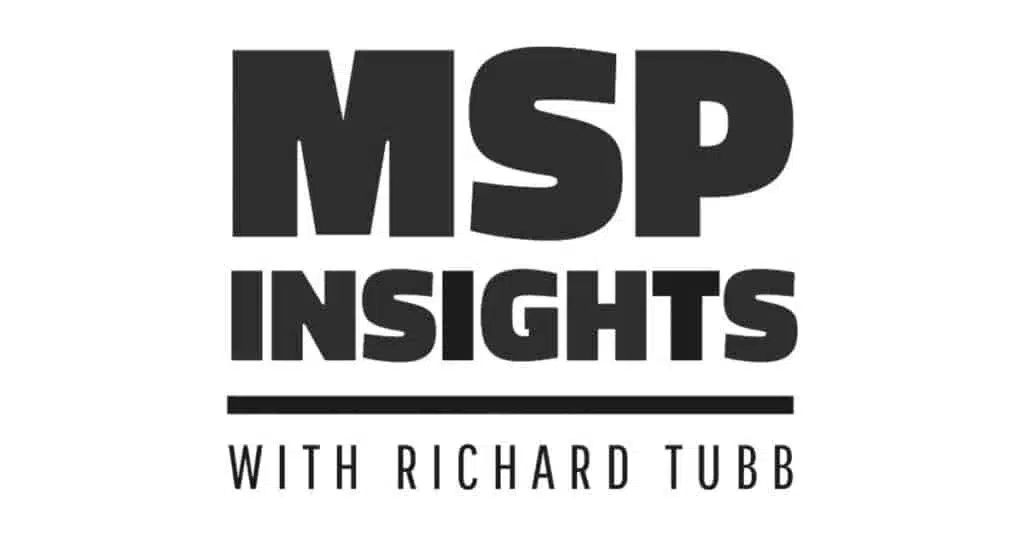Andy O’Neil started out in roles within various MSPs before joining Autotask. Today, he’s leading the managed services function at Numata, a global MSP founded in South Africa. He’s a rare beast, having worked for an MSP, a vendor and back again.
An Interview With Andy O’Neil
What it’s Like Going From MSP to Vendor
Andy explains that the main difference is about scale. As an MSP, some of your clients are key to your profitability and success. “If you lose one or two of those, the bottom drops out of your world.
“But for a vendor, while you don’t want to lose a client, the impact on your business isn’t the same. I remember one day at work when a salesperson was complaining about having to hit their targets and feeling under pressure; a colleague pointed out that you’re not at risk of losing millions of pounds.
“So while you feel pressure whatever your role, as a vendor you’ve got a much bigger canvas to paint on. You’re not worried about things going wrong with a client who could make or break your business.”
How the PSA Market has Evolved
Many MSP owners have started to realise that a PSA (professional services automation) tool is no longer a ticketing system. They think that ticketing is the important thing, but it’s billing that matters.
“Because if you don’t bill, you don’t get paid. And people have started to sharpen their billing practices as a result. That really helps, because the alternative is not what you want.
“So I’d urge you, whoever you work with, get more out of your vendor. Most MSP owners don’t buy enough implementation/consulting when they choose a partner. They think, ‘I’m in IT, I’ll work it out.’ But you won’t, so ask your vendor to help you use their tool and tighten up your billing process.”
The Biggest Assumption the Average MSP Makes About PSAs
One of Andy’s main tasks in vendor roles was helping MSP clients to understand exactly what their PSA tool could do for them. Essentially, he was reducing churn for the company.
“So often, an MSP client would tell us they were leaving because the PSA didn’t do what they wanted it to. And inside an hour, we proved to them that not only does it do x, but it does y and Z as well. And they hadn’t even considered Y and Z.
“They weren’t incompetent, but they were busy with keeping their MSP going and managing clients. Their frustration was rarely down to the vendor tool. Instead the problem is with the set-up. And they could read help articles, but the people who could fix the issue were the people who made the tool – the vendor.”
The PSA Feature an MSP Under-Utilises
The number one feature that MSPs overlook is billing, says Andy, which means they’re leaving money on the table. He uses Netflix as analogy: “You pay £10 a month to watch whatever you want. Except the latest popular show isn’t on Netflix.
“So now you need an Apple subscription as well. And then both companies bill you, but you’re not getting as much as it sounds at first. If we bring that back to your PSA, it should be able to tell you what those parameters are (i.e. you can’t watch Ted Lasso if you only pay for Netflix).
“Next, it should move the billing around so you can see what you’re paying for and the value of each part of the contract. It can also work out what to do if you need something not covered by your existing subscriptions.”
How to Overcome Alert Fatigue with Your Vendor Tool
Many MSP owners complain of alert fatigue, and it’s something that can be managed by the solution you have from your vendor. Reducing alerts and therefore fatigue is about working out what’s important. Says Andy:
“What do you care about? If you care about it, you should monitor it, a ticket should be created in the PSA, and you deal with it. But if you don’t care, you shouldn’t get an alert because you’re not monitoring it.
“What do you do for your customers? If you don’t support SQL for instance, don’t monitor it. What’s in your managed services agreement and what’s in scope? You’ve already set out what you will and won’t monitor, so don’t turn on all the available alerts in the PSA if you don’t need them!”
Common Billing Pitfalls for MSP Owners
Andy says it tends to be the accountancy team that gets confused with billing. “Your PSA tool is a billing platform, not a finance platform. You can’t use your PSA for accounting and managing income and outgoings.
“If you buy Autotask, you can’t put that into the PSA! It won’t work as a ledger, because it doesn’t understand that kind of information. So you’ll need a separate accounting software tool as well. And then you get into integrations.
“Your PSA and your accounting software need to work together. Now, many PSAs are developed in America, so they don’t always integrate with the software we use in the UK. But the good news is that there are lots of third-party tools to help.”
How to Connect With Andy O’Neil
- Numata IT
- Like Numata on Facebook
- Follow Numata on LinkedIn
- Follow Numata on X
- Connect with Andy on LinkedIn
How to Connect With Me
- Subscribe to TubbTalk RSS feed
- Subscribe, rate, and review TubbTalk on iTunes
- Subscribe and rate TubbTalk on Spotify
- Follow TubbTalk on iHeartRadio
- Follow @tubblog on Twitter
Mentioned in This Episode
- IT Management software: ConnectWise
- PSA tool: Halo
- PSA/RMM platform: SuperOps
- Data backup platform: Datto
- IT and security platform: Kaseya
- IT and MSP Business Growth Expert: Ian Luckett
- Helping Ambitious MSPs to Scale to £1m: Stuart Warwick
- Business expert: Karl Palachuk
- Accounting software: Xero















Comments